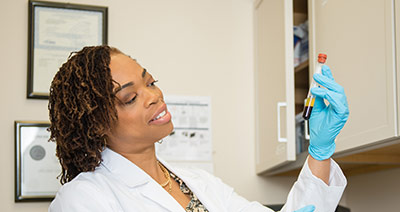Peyronie’s Disease Treatment
Scroll down to view operative video
Injections for Peyronie’s Disease
If one does feel that their Peyronie’s disease is disallowing sex, then Dr. Engel’s first line therapy before surgery is contemplated is injection therapy.
If one does feel that their Peyronie’s disease is disallowing sex, then our first line therapy before surgery is contemplated is injection therapy whereby the Peyronies’ plaque itself is injected over a series of several injections with a substance designed to either melt the scar directly (Xiaflex) or indirectly (Verapamil). There have been several injections used for Peyronie’s including interferon and steroids, but Xiaflex and Verapamil are the most studied and have the best data. If a patient is contemplating injection therapy, they will return for a second consultation with Dr. Engel with a photo demonstrating their erect penis and its maximal curvature or defect.
With both substances, patients will be asked to also perform a traction protocol designed to hopefully stretch the scar as it softens from injections. Verapamil is admistered over 12 office visits, each two weeks apart, with an evaluation after the sixth injection as to whether one is noticing improvement that would justify the second round of six injections. Xiaflex is given also over a 24 week period, but in four cycles of three visits spanning a week at a time. Xiaflex is FDA improved and Verapamil is not, but both yield similar results – approximately 50% of patients will notice significant reduction of their curvature, and over 80% will notice reduction of discomfort. Injections will be less effective for constrictions or hinging, and not effective at all if one’s plaque is fully calcified. Xiaflex is extremely expensive, although often covered by insurance. Verapamil is a very inexpensive, generic medication.
Surgical Treatment of Peyronie’s Disease
If injection therapy fails, and the patient still feels as if, without further treatment, fulfilling sexual function will simply not be possible, then surgical treatment can be offered.
If injection therapy fails, and the patient still feels as if without further treatment fulfilling sexual function will simply not be possible, then surgical treatment can be offered. If a patient has severe erectile dysfunction such that he relies on injections or a vacuum pump for erections, then the most common procedure offered is placement of a penile prosthesis. For those patients with fine erections, with little to no erectile dysfunction, then either a plication procedure or an incision and grafting procedure is offered. Procedures that remove the plaque are generally no longer performed as they produce unacceptable rates of impotence. If seriously considered, Dr. Engel will send the patient for a penile blood flow study to ensure that the risk of impotence after a surgical procedure is as low as it can be. Surgery for Peyronie’s disease should generally be considered a last resort.
Plication Procedure
A plication procedure is an outpatient surgical procedure where the fixation of the plaque is counteracted by permanent sutures placed in the penis opposite the plaque. In essence, it is creating a second fixation point, much like can be seen with The Leaning Tower of Pisa in Italy. This is a relatively simple operation, with a less than 1% chance of impotence after the surgery with little chance of numbness. However, the major problem with this operation is that it will shorten the penis, and the shortening is very much related to the degree of curvature. A patient that feels hindered enough to want surgery will have typically a 50-90 degree curvature. In such a case, a plication procedure will shorten an erection by up to two inches or more. Some patients, already struggling with the situation psychologically, find this new impairment simply unacceptable.
Learn more about Penile Plication for Peyronie’s Treatment (graphic content) >>
Incision & Grafting Procedure
An incision and grafting procedure for Peyronie’s disease is a complex reconstructive procedure that is performed by Dr. Engel as a last resort for severe Peyronie’s disease. Such a procedure is reserved for patients with severe curvature that has not responded to injection therapy. Patients that opt for this surgery usually have good to excellent erections before surgery, as patients with concomitant severe erectile dysfunction are usually managed with a penile prosthesis.
Patients must understand that it carries a 3-5% chance of impotence, as well as a 10% chance of some degree of penile numbness. This procedure leads to more post-operative discomfort than a plication procedure. But, in this procedure the plaque is lengthened, and the penis restored to nearly its original erectile length. Most patients find that this benefit outweighs the higher risk and recovery for this procedure, and it is the more common choice in Dr. Engel’s practice since most patients that get to the point of wanting surgical correction feel there is little to lose. Such patients tend to reason that they are choosing surgery to try to correct a huge, disturbing issue in their lives, and they want to try the surgery that will get them as close to how they were before, even if that means more risk.
The procedure is done in a hospital setting. Patients are kept overnight with a compressive dressing and see Dr. Engel the next day. Sensation of the penis is checked at that time, and then patients are asked to come again to the office in two weeks. At that time, erections with pills like Viagra are encouraged, as is gentle traction to keep the graft from contracting. Full recovery may take one to two months.
Warning, the video below represents an actual procedure – Content is graphic





